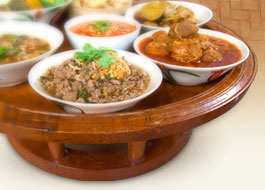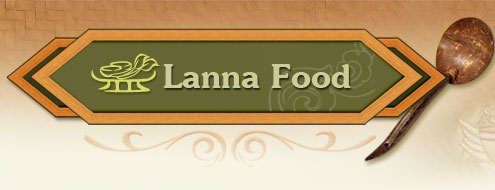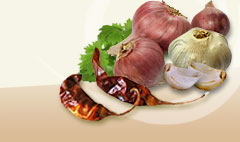Paracress |
|
|
 | Acmella Oleracea (L.) R. K. Jansen H. |
|
| |
 | Compositae |
|
| |
 | Paracress |
|
| |
 | Phak khrat, phak khrat hua (Rattana Phromphichai, 1999, 4125); phak phet (Northern), phak tum hu (Southern), ya tum hu, ung-huai-kai (Chinese) (Kanchana Diwiset, et al., 2005, p. 111) |
|
| |
 | Perennial plant, 20-30 cm. high, creeping and erect, succulent stems, greenish purple, slightly hairy when young, furrow, adventitious roots at the nodes. Leaves simple, opposite, triangular, toothed, long petiole, rough and hairy, 3-4 cm. long. Flowers axillary, terminal, yellow, round, ring-like, 2 circles of flowers, outer female, inner bisexual. Fruit oval. (Kanchana Diwiset, et al., 2005, p. 111) |
|
| |
 |

Calcium, phosphorus, iron, Vitamins A, B1 and C, carbohydrates, protein and fat. (Phak Phuen Ban Ahan Phuen Mueang, 2007, p. 41) |

The Chinese use it as an anesthesia to relieve hemorrhoids, to treat fever and mixed with vinegar to treat a sore throat, toothache. Its hot taste boosts the appetite, releases wind and helps digestion. (Kanchana Diwiset, et al., 2005, 110; Botanical Garden Organization, 2004). Roots are used as a laxative or boiled to rinse out the mouth to stop inflammation and treat a sore throat. (Rattana Phromphichai, 1999, p. 4125)
It is used in Lana medicines to treat eye cancers or red eyes and burning eyes (Rattana Phromphichai, 1999, p. 4125)
|
|
| |
 | All year round |
|
| |
 |
Kanchana Diwiset, et al.,(Comp.). (2005). Phak Phuen Ban Phak Nuea. Phennapha Sapcharoen, editor. (2nd ed.)Bangkok: Center for Text Development on Thai Traditional Medicine.(in thai). Botanical Garden Organization. (2004). Queen Sirikit Botanical Garden. Chiang Mai:Botanical Garden Organization.(in thai). Phak Phuen Ban Ahan Phuen Mueang.
(2007). Bangkok: Fa Aphai Co., Ltd. (in thai). |
|
| |
|
|




